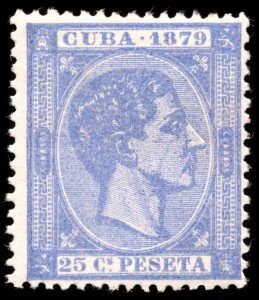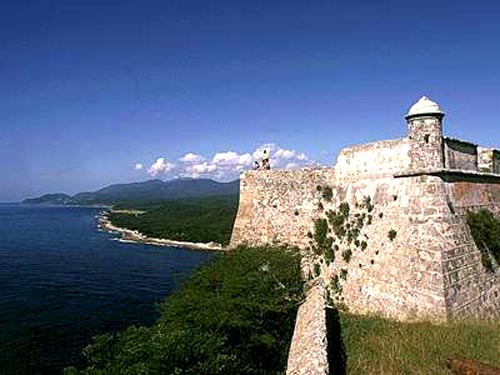On December 21, [1879,] an American team named the Hop Bitters, headed by Cincinnati promoter Frank Bancroft, visited Havana and easily disposed of a Cuban squad that scored a single run by Carlos Zaldo, who got on base following a successful bunt, the first native player to master this particular craft.
In Cuba the team was indeed promoted as the “Hop Bitters,” a name usually associated with Rochester, New York. And in fact the trip appears to have been financed by a “Mr. Soule of Rochester, N.Y.” (New York Clipper, November 29, 1879). But it turns out that Bancroft’s team was really, as the Clipper remarked in its November 29 issue, “composed entirely of the Worcesters of 1880”—that is, the Worcester, Massachusetts, club of the (minor) National Association of 1879, with the players they intended to use the following season.
The Worcesters joined the National League for the 1880 season, and would play there through 1882 (they are called in all the reference books the “Worcester Ruby Legs,” though I’m not sure how prevalent that nickname was at the time); so the nine that visited Cuba in 1879 was, if not technically a “major league” club, practically one. The latest standings I could find for the 1879 NA shows the Worcesters at fourth place of nine clubs with a 19-23 record. In 1880 they would fare about the same in the NL, at 40-43 and fifth (though with Lee Richmond and Fred Corey added on the mound, and Harry Stovey in the outfield). The roster is listed in the Clipper (November 22, 1879); here is the passenger manifest for their return to the United States, arriving at New Orleans on December 31:
The players are:
George Wood
Alonzo Knight
Charlie Bennett
Art Whitney
J. F. “Chub” Sullivan
C. J. “Curry” Foley
A. J. “Doc” Bushong
Arthur Irwin
Frederick “Tricky” Nichols
Seven of these players (all but Foley, who would go to Boston, and Nichols, who would only pitch two games for Worcester) would be regulars for Worcester in 1880.
The trip was not a financial success. As far as I can tell, they ended playing only two games in Cuba, spending the rest of the winter in New Orleans.
It’s important to remember that the United States had made several attempts to acquire Cuba, most recently offering to purchase the island in 1869, just after the Ten Years’ War, a Cuban rebellion, had begun. Baseball, probably considered a symbol and symptom of U.S. subversion, was banned by Spanish authorities in that same year (though the ban was apparently flouted often, or only intermittently enforced). In 1873, war had nearly broken out between the United States and Spain over the “Virginius Affair,” a Bay of Pigs-like incident involving an American-manned ship caught attempting to smuggle arms, ammunition, revolutionary leaders, and about 100 soldiers into Cuba. When the Worcester players visited in 1879, the Ten Years’ War had been over for only a year, and the atmosphere they encountered was surely tense.
Sourres: Agate/JorgeFigueredo/internetPhoto/www.thecubanhistory.com
The first american professional team to visit Cuba (1879)
The Cuban History, Arnoldo Varona,Editor
EL PRIMER EQUIPO DE BASEBALL PROFESIONAL AMERICANO EN VISITAR A CUBA (1879)
El 21 de diciembre de [1879], un equipo americano llamado los Bitters Hop, encabezados por el promotor Cincinnati Frank Bancroft, visitó La Habana y fácilmente eliminados de una escuadra cubana que anotó una sola carrera de Carlos Zaldo, que consiguió en la base después de un toque de éxito, el primer jugador nativo de dominar este arte particular.
En Cuba el equipo estaba hecho promovido como el “Bitters Hop”, un nombre suele asociarse a Rochester, Nueva York. Y, de hecho, el viaje parece haber sido financiado por un “Mr. Soule de Rochester, Nueva York “(New York Clipper, 29 de noviembre, 1879). Pero resulta que el equipo de Bancroft era realmente, ya que el Clipper señaló en su edición de 29 de noviembre “, compuesto en su totalidad de los Worcesters de 1880” es-que el Worcester, Massachusetts, club de la Asociación Nacional de 1879 (menor de edad), con los jugadores tenían la intención de utilizar la siguiente temporada.
Los Worcesters se unieron a la Liga Nacional para la temporada 1880, y jugarían allí a través de 1882 (se les llama en todos los libros de referencia de los “Worcester Rubí piernas”, aunque no estoy seguro de cómo es frecuente que apodo era en ese entonces), de modo los nueve que visitó Cuba en 1879 era, si no es técnicamente una “primera división” del club, prácticamente uno. Las últimas posiciones que pude encontrar para el 1879 NA muestra los Worcesters en el cuarto lugar de los nueve clubes con un récord de 19-23. En 1880 les iría sobre el mismo en la Liga Nacional, en el 40-43 y el quinto (aunque con Lee Richmond y Fred Corey añadido en el montículo, y Harry Stovey en los jardines). La lista aparece en el Clipper (22 de noviembre, 1879), aquí está la lista de pasajeros para su regreso a los Estados Unidos, llegando a Nueva Orleans el 31 de diciembre:
Los jugadores son los siguientes:
George Wood
Alonzo Knight
Charlie Bennett
Arte Whitney
J. F. “Cacho” Sullivan
C. J. “Curry” Foley
A. J. “Doc” Bushong
Arthur Irwin
Frederick “Tricky” Nichols
Siete de estos jugadores (todos menos Foley, quien iría a Boston, y Nichols, que sólo sería lanzar dos juegos de Worcester) sería asiduos de Worcester en 1880.
El viaje no fue un éxito financiero. Por lo que yo puedo decir, que terminaron jugando sólo dos partidos en Cuba, pasando el resto del invierno en Nueva Orleáns.
Es importante recordar que los Estados Unidos habían hecho varios intentos de adquirir Cuba, la última oferta para comprar la isla en 1869, justo después de la Guerra de los Diez Años, la rebelión cubana, había comenzado. Béisbol, probablemente considerado un símbolo y síntoma de EE.UU. subversión, fue prohibido por las autoridades españolas en ese mismo año (aunque la prohibición fue aparentemente burlado a menudo, o sólo cumplir intermitente). En 1873, la guerra casi había estallado entre los Estados Unidos y España sobre el “asunto de Virginius”, una bahía de Cochinos incidente-como la participación de un barco estadounidense tripulado atrapado intentando contrabandear armas, municiones, líderes revolucionarios, y cerca de 100 soldados en Cuba. Cuando los jugadores Worcester visitaron en 1879, la Guerra de los Diez Años había terminado hacía sólo un año, y el ambiente que encontraron fue sin duda tensa.
Sourres: Agate/JorgeFigueredo/internetPhoto/www.thecubanhistory.com
The first american professional team to visit Cuba (1879)
The Cuban History, Arnoldo Varona,Editor



 THE FIRST AMERICAN professional baseball team to visit Cuba (1879) * El Primer equipo de baseball profesional americano en visitar Cuba (1879)
THE FIRST AMERICAN professional baseball team to visit Cuba (1879) * El Primer equipo de baseball profesional americano en visitar Cuba (1879)

